While U.S. airlines no longer accept emotional support animals free of charge in a cabin as they do with psychiatric service dogs, a few international airlines are still ESA-friendly.
Here are some airlines that are still accepting emotional support animals:
- LATAM Airlines accepts emotional support animals on flights from or to Mexico, Colombia, and domestic flights within Colombia. You will need a licensed healthcare professional to complete their certificate.
- Volaris accepts emotional support animals on the following routes if you have an ESA letter from a licensed healthcare professional:
- Within Mexico
- Between Mexico and Central America
- Between Mexico and South America
- Within Central America
- Within South America
- Between Central America and South America
- AeroMexico accepts emotional support animals if you submit a certificate signed by your psychiatrist.
- Air Canada accepts emotional support animals if you have a recommendation from a licensed health professional.
- WestJet accepts emotional support animals with a recommendation from a licensed health professional.
To fly with an emotional support animal on participating airlines, you typically need an ESA letter from a licensed mental health professional. The LMHP will also need to fill out forms provided by the airline.
Most airlines require that ESA documents be submitted at least 48-96 hours before departure. Before booking any flight with your ESA, you should always call your airline or check their website to confirm their current assistance animal procedures.
Connect with a licensed health professional online to see if you qualify for an emotional support animal
Which airlines are no longer accepting ESAs?
U.S.-based airlines no longer accept emotional support animals as of March 1st, 2021. The following airlines will no longer accommodate emotional support animals:
Airlines of North America:
- Alaska Airlines
- Allegiant Air
- American Airlines
- Delta Air Lines
- Frontier Airlines
- Hawaiian Airlines
- JetBlue
- Southwest Airlines
- Spirit Airlines
- Sun Country
- United Airlines
International Airlines:
- Air China
- Air New Zealand
- All Nippon Airways
- Cathay Pacific
- China Eastern Airlines
- China Southern Airlines
- Emirates
- Eva Air
- Korean Air
- Qatar Airways
- Turkish Airlines
- Singapore Airlines
- KLM
Airlines that no longer recognize ESAs will treat your animal companion as a normal pet. Pets are subject to fees and the airline’s size, weight, and breed restrictions. Some pets are not allowed to fly in the cabin and can only travel in cargo. In addition, certain animals may be prohibited entirely from flights.
These airlines have severely hampered many ESA owners’ ability to fly, either because the ESA owners can’t afford the fees (which can cost as much as $175 each way) or because their ESA is too large to board the cabin.
What about Psychiatric Service Dogs (PSD)?
Owners of psychiatric service dogs still have the right to board flights free of charge because they are considered service animals and perform specific tasks that are needed by the owner to function. If you’re wondering, yes, you can turn an ESA into a psychiatric service dog as long as they can be trained to perform specific tasks.
The main difference between an ESA and a PSD is that a PSD must be individually trained to perform tasks related to the handler’s disability (for example, retrieving medication, providing pressure therapy during moments of crisis, helping the handler maintain daily routines, etc.).
In contrast, ESAs have no specific training requirements and alleviate symptoms of mental illness just through their presence. Also, unlike ESAs, which encompass a wide array of animals, only dogs can serve as psychiatric service animals.
All airlines flying in America are required to accept Psychiatric Service Dogs on flights.
To see if you qualify for a PSD, click the get started link below.
How to Fly with a Psychiatric Service Dog
PSDs are allowed to board flights in the cabin free of charge as long as the passenger submits the DOT’s Service Animal Transportation Form in advance. On the form, the passenger must self-certify that their dog has been trained to perform tasks relating to a disability.
PSD owners have a right to privacy and dignity: airlines are not allowed to ask what the passenger’s specific disability is, and they cannot require passengers to demonstrate the task their PSD has been trained to perform. The form also requires the name of the PSD’s trainer, which can be the owner — third-party training is not a requirement for PSDs.
If you’re interested in owning a psychiatric service dog or you’re already a PSD owner who wants additional documentation for peace of mind, we can help. With our PSD letter service, a licensed mental health professional can evaluate whether you have a disability that qualifies for a psychiatric service dog under the ADA and Air Carrier Access Act. If you qualify, the licensed professional will issue a signed PSD letter. You can get started with a PSD letter by clicking here.
Qualify for Your Psychiatric Service Dog Letter Online

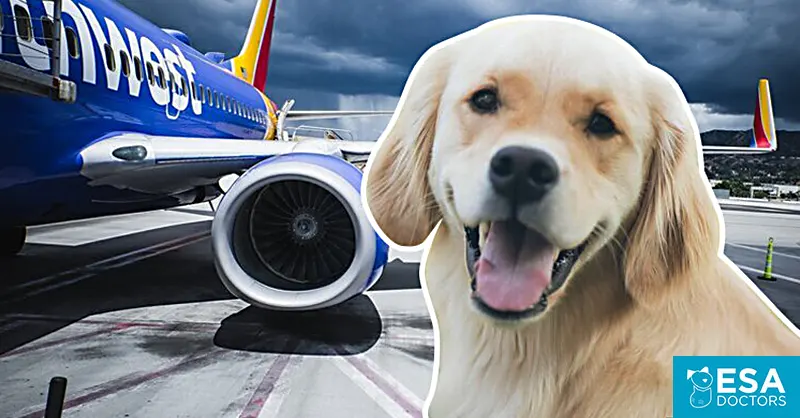
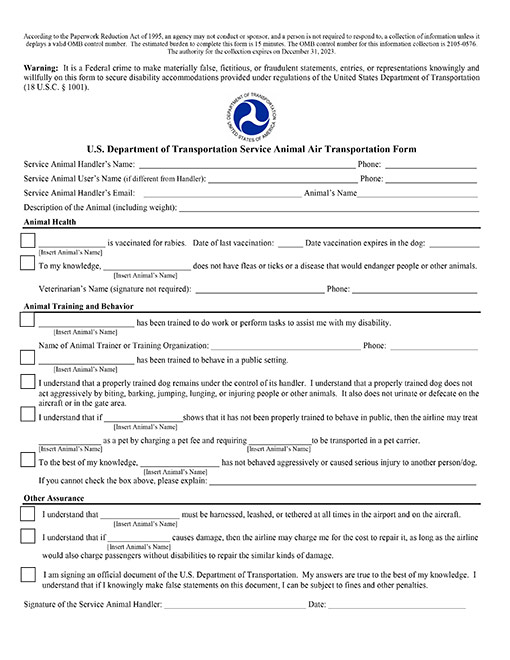

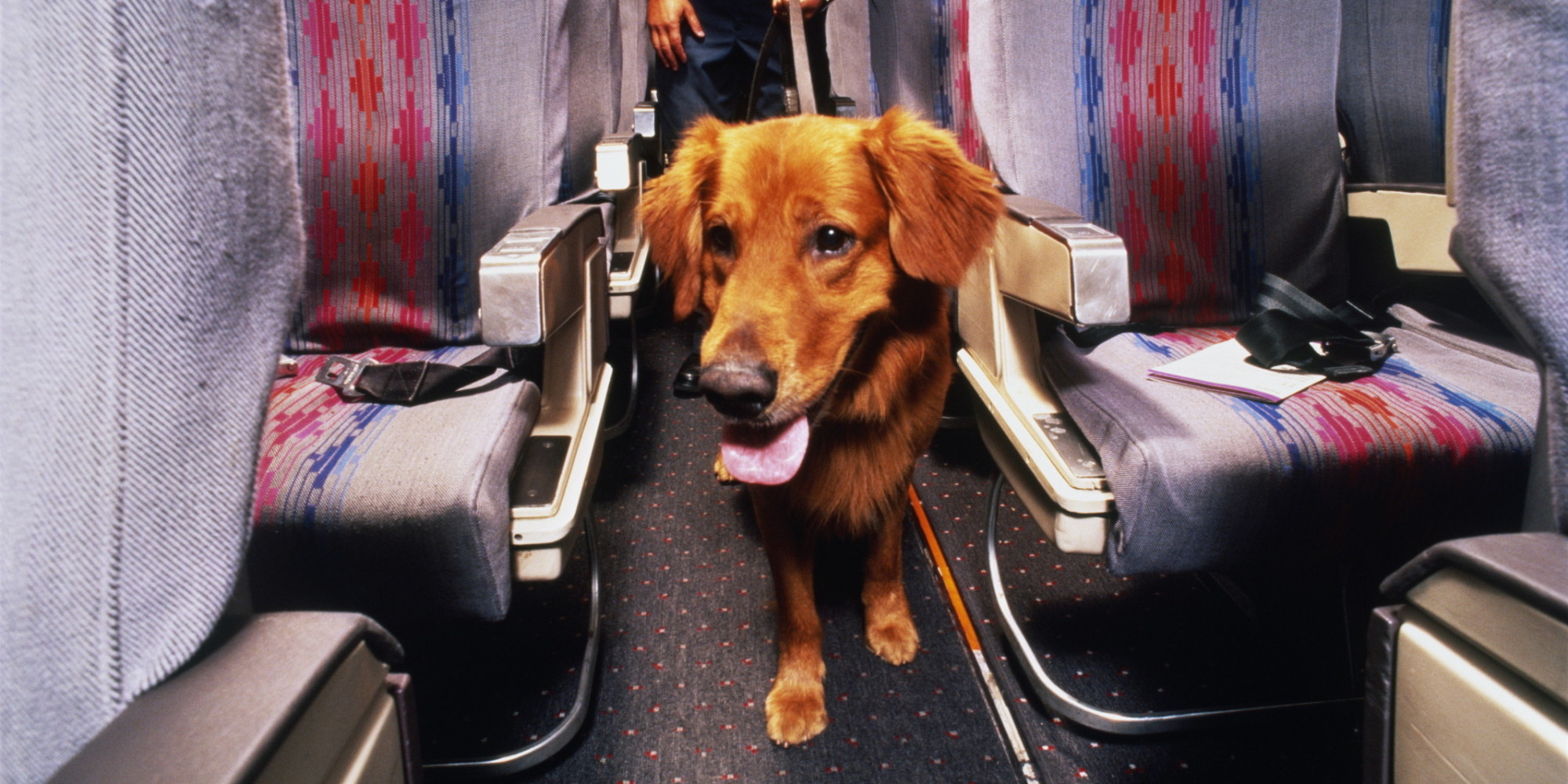
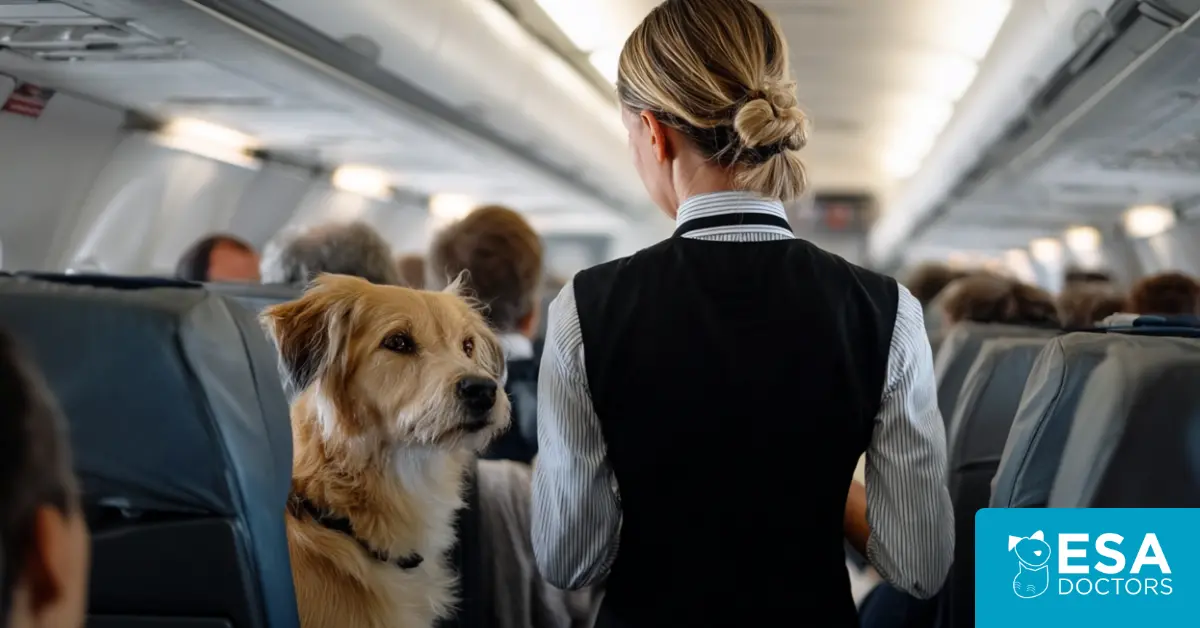
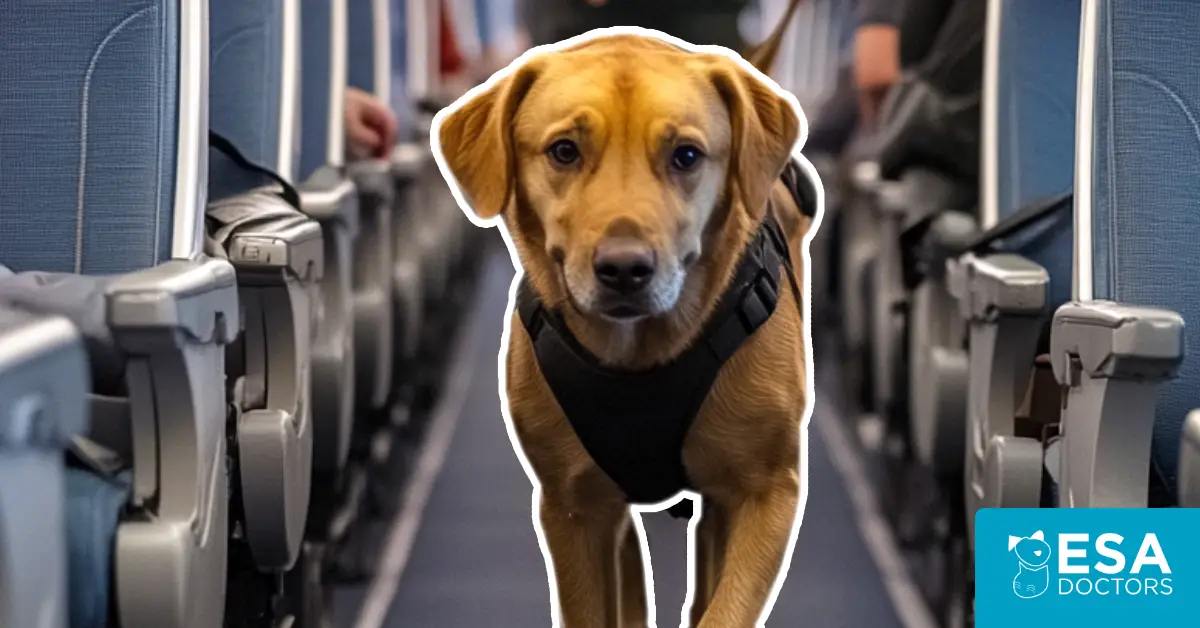
My cat is so much better trained than the majority of dogs that I saw on leashes freely walking through the airport, yet we were both under extreme stress and I had a panic attack not having her in my lap. She is 3 years old with 50,000 miles on her, and I recently had to put her in a carrier for the first time and shove her under a seat. She had zero issues at all prior to that last trip under the “new rule”, as she is well-behaved, trained, and calm, and is able to help me, by simply talking to me, nudging, and giving me random things from my bag. She never gets up without my permission. The only problem I’ve ever faced were bad dogs and judgy people. My cat walks on a leash past dogs completely unaffected, or just sits at my feet and watches their owner try to keep control. I’m heartbroken that they don’t have any exceptions for my exceptional cat. And this isn’t even about the fees. I would pay for the seat beside me, and all the fees, just to have her in my lap and not in a bag. It is so cruel and I will never put her through that again. I have, since then, driven 5 trips over 1000 miles each with her in my lap. That’s my “boycott”
I feel you completely my cat Akira is also well trained better than most dogs and a lot of airlines wont allow her to get out of her carrier if i needed her
I’m feeling some kind of way. I didn’t realize I haven’t traveled with my pet since 2021. So, when I booked my flight and called the airline (as I always do) to let them know I was traveling with my Support Animal I was informed about the change ~ I’ve read most of your comments however, I understand the reasoning behind the change was wrongful entitlement. Sad it has to happen, but people tend to take advantage of a GOOD situation because they want everything to go their way.
Some of us need our pet to comfort us when we aren’t quite right (in the mind), and it’s so unfair that others seek what’s best for themselves because they feel entitled to everything when it benefits them.
I will continue to travel with my pet ~ now in a bag and for a fee.
Life is too short to fight over what’s right and what’s wrong …. when YOU already know your wrong.
Maybe if we all boycott airlines and they start losing money, then maybe they will reconsider changing the ESD ruling so our ESD dogs can sit on our laps. I have been flying for 11 years with my emotional support animal and he has sat on my lap throughout the whole flight without a peep or anything and I feel that it is discrimination to not allow him to sit on my lap because another dog might have been growling and barking.. it’s very cruel and inhumane to shove a dog under the seat in a carrier. We can no longer travel by ear due to this decision. I pray that there will be enough people not flying where the airlines will take note and perhaps revisit that ruling and change it back to the way it was
As far as I am concerned, this is discrimination against cats simply because service dogs, psychiatric or otherwise, are allowed in the cabin. A cat in a carrier under the seat is much less disruptive and than a dog on a lead and takes up no extra space.
I am willing to pay the fee, but now, airlines are not allowing small pets under the seat for flights to the UK. My cat will not survive in cargo. The last time we did that was quite traumatic for the both of us.
If you want to update your article, Recently, Flair Airlines and I believed Swoop as well both North American Airlines have stopped allowing ESA in the cabin.
Why do things need to be canceled? Can’t we amend rules instead of throwing things away entirely? Last year, JetBlue had already made it that ESAs could only be a dog or cat, so peacocks, snakes, pigs and horses weren’t the issue. How about the requirement that your dog pass a special temperament screening? And how about separating the passengers with animals from the ones who are allergic &/or afraid? Because of covid, the planes have AMAZING cabin airflow and filtration.. why not use that in a way that makes sense? If you bring a dr’s note, you get seated toward the front of the plane. Shoot, they’ve been separating coach and business/first class for ever and no one has an issue with that. Look, I don’t like sitting in the back of the plane, but I’d do it happily if I could have my ESA with me
How am I going to fly now? My dog always sit on my lap from start to end. I feel less anxiety and nervous during flying while hugging him… what am I supposed to do now:-(
Make an effort to train your pet ….look up requirements for public access certification. If you are unwilling to expend the effort required, then that would be on you, not your pet. I have a “real” service dog , for deafness, and I am required to be recertification on a regular basis. If I don’t, I cannot present my dog as a service dog. In additional, I could have to surrender my dog. Guess you can figure out that I am diligent in maintaining her proper public behavior.
Very helpful for me , great information . much blessings. and always let your voice be heard.
I saw where this article mentioned that this was a setback for those with an invisible illness. Speaking from another perspective, this is good news for those with an invisible illness. Traveling can be a complicated prospect for so many with invisible illnesses, and having a “one size fits all” approach is detrimental to many people. I think we also need to recognize that while we have certain needs, other people may have different needs.
I understand that each person has different situations. I think that service agencies (airlines, trains, busses) need to realize this and be able to make reasonable accommodations for as many as possible. This may cause some inconvenience to some passengers, but compared to having a severe asthma attack while in the air is even worse. Struggling to get air, hoping that your inhaler will be sufficient and that this attack won’t be so bad that you may need more medical attention is scary. Your body reacts, gasping, and your mind races in some aspects, but also is laser focused on just getting air.
I believe that certain planes should be pet free. I say planes because if an animal has been on a plane, the dander can remain. The same should be done for any other transit system. Other planes should be designated as pet friendly.
I am also unique in this situation that if I were to ever fly with my family instead of for other reasons, it may be difficult. My older son is on the autism spectrum. While our cat is not a service animal, or even a technical ESA, my son started to blossom when we got our cat. Our little cat (or very big cat as he is now) is an important part of our family. If we were to fly, our cat could help ease my son’s tension. However, if we were on a pet friendly plane, I could have issues because of an allergy to dogs. This is why I do recognize that trying to accommodate my situation can probably not be done, so we travel by car. It’s something that I understand and recognize that trying to accommodate my family could cause undue issues for others trying to get a flight.
So, I have had pretty bad experiences regarding my allergies and other invisible illnesses, especially this past year. Writing this response is very scary for me as well. Some things can bring out a lot of passion, and I have been told some horrible things. I will tell you why typing this reply is scary for me, but I do want as many voices as possible to be heard and appreciated. While commenting on a site that I was allergic to dogs, someone responded that “Being allergic to dogs is God’s way of telling you that you don’t belong on this earth.” I can remember this word for word. Also, while commenting on more recent issues regarding Covid, I had someone tell me that my life, and anybody who has underlying medical conditions, is not worth inconveniencing those who don’t have medical conditions. While I understood that this person was very self-centered (he had asked me a question in one of his responses and I replied with an answer. He replied that he didn’t have time to read my response), it hurt to have someone say this. I cried, a lot, but then I said to myself that if I had things like this said to me, so have others. I ended up starting a podcast to support those with invisible illnesses.
Having severe allergies or asthma is considered a disability under the ADA. If you are allergic to dogs or any other animal, flying creates a stressful experience. I am allergic to dogs. I have a nephew who has severe asthma which can be triggered by allergies.
I have a few different invisible illnesses, and it seems that each one affects another. One of my illnesses can cause inflammation around my lungs. I have allergies and asthma. Having an asthma attack is scary.
I am passionate about advocating for all people who have invisible illnesses, including advocating for those with mental health conditions (yes, I suffer from sometimes crippling anxiety) and it seems that there are so many overlaps where it seems that when dealing with public areas, a person can be put at risk, even if they try to take all precautions.
I have spoken with some other advocates for clarity on issues of the ADA. I do think that in many ways I am lucky. While I have these illnesses, I am living in a time that offers the better medical care than even just 50 years ago. Many people also understand and accept that others have invisible illnesses.
While this change in policy can negatively impact some, it can impact other positively. While it seems like these two different groups do not have anything in common, we actually have a lot on common. While we have individual voices, we can be stronger with combined voices. We need to let transportations services know that people are not all the same. We need to let them know that each person has a right to travel without fear of a medical incident. Accommodations should be made for as many people as possible and it would be wonderful if transportation services could have some type of panel to discuss issues with those who have different illnesses and need certain accommodations. This could foster discussion not only between the transportation services and those with the need for accommodations, but also provide a time where those with different illnesses can come together and try to understand the needs of those with different illnesses.
I know that this is long, but traveling is complicated for anybody, and is more complicated for those who may need some type of accommodation. But those accommodations may work for some, but may be detrimental for others. By recognizing both our differences and similarities, we may be able to provide voices for those who need it most.
I understand your point of view and agree things should be different. At the same time you say this is a good change for some people, however you’re forgetting that people can still fly with their pets in the cabin if they’re 20 lbs and under. This is the hard part because my ESA is 45 lbs. I have ptsd, anxiety and depression, but unfortunately my helper is just too big to help? I am fine with paying for another seat, and I am also fine sitting in the back of the plane. I wish that people with severe allergies like you could sit near the front of the cabin where the fresher air flows to the back. But that makes too much sense.. airlines want their $ but don’t want to sell an extra seat for a person with a support animal. Instead, zero animals -medium size and up- are allowed on the plane but people with allergies still have to deal with smaller animals around the cabin. I swear that airlines could never do something that makes everyone happy.. instead they want everyone to be miserable.
You are so right Amy! I can no longer visit my family because I cannot travel without my ESA. She is 23 pounds and she’s just a little bit too big for the carrier which goes under the seat in front of me. With her I was guaranteed to be able to enjoy visiting my children and grandchildren and now I can’t see them and my heart is so sad and I am depressed. I am not able to drive far because of my anxiety so driving 18 hours is out of the question.
It’s mostly not dogs which are the problem. You can “train” your dog to lick your face when prompted, thus calming your anxiety. Bam. PSD. The people who caused this are the folks who demanded to travel with their Emotional support miniature horse, or python, turkey, ostrich… or the ones with bad behaving, untrained dogs that cause a fuss in the terminal. My girlfriend had her ESA paperwork, and while waiting in line another “ESA” lunged at her pup, and her pup barked at the attacking dog. The gate agent almost didn’t let our dog on, and absolutely did not let the other dog on. So train your pup, and go through the proper channels. Good luck!
In my opinion, if your animal is not PERFECTLY trained and well behaved, they should not be allowed in the cabin. Many times I have been on a flight with my own ESA, and there has been another “ESA” whom is whining, barking, and fidgeting which causes unrest with everyone else on the flight. The whole point of an ESA is to provide calming, soothing aid to the affected individual. If you have a small dog as an ESA and it becomes disruptive when put inside a crate, you should not fly with them, period. Allowing disruptive dogs on planes is what has caused this terrible decision to be made official. As a trainer, I feel like if your dog is disruptive you should be asked not to fly on that airline again-It risks the rights and tolerance of others when involving well-behaved ESA’s and their humans that desperately need them.